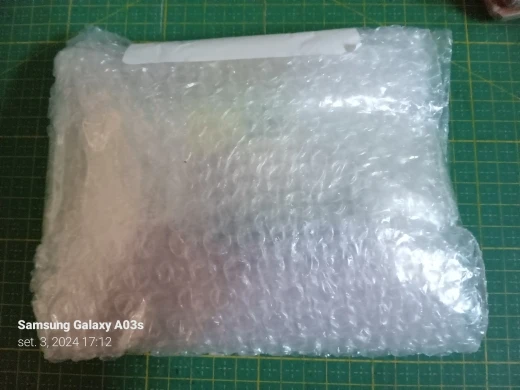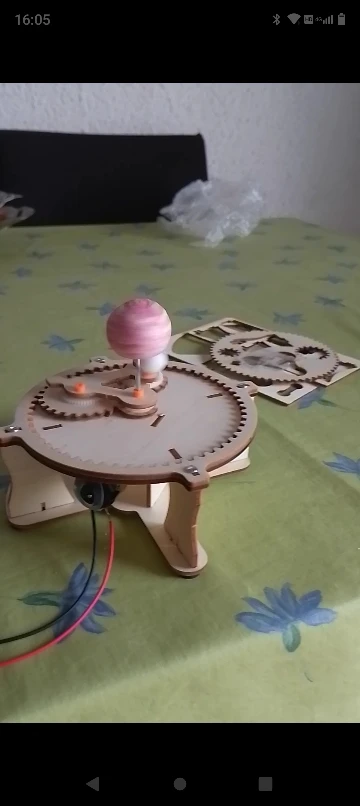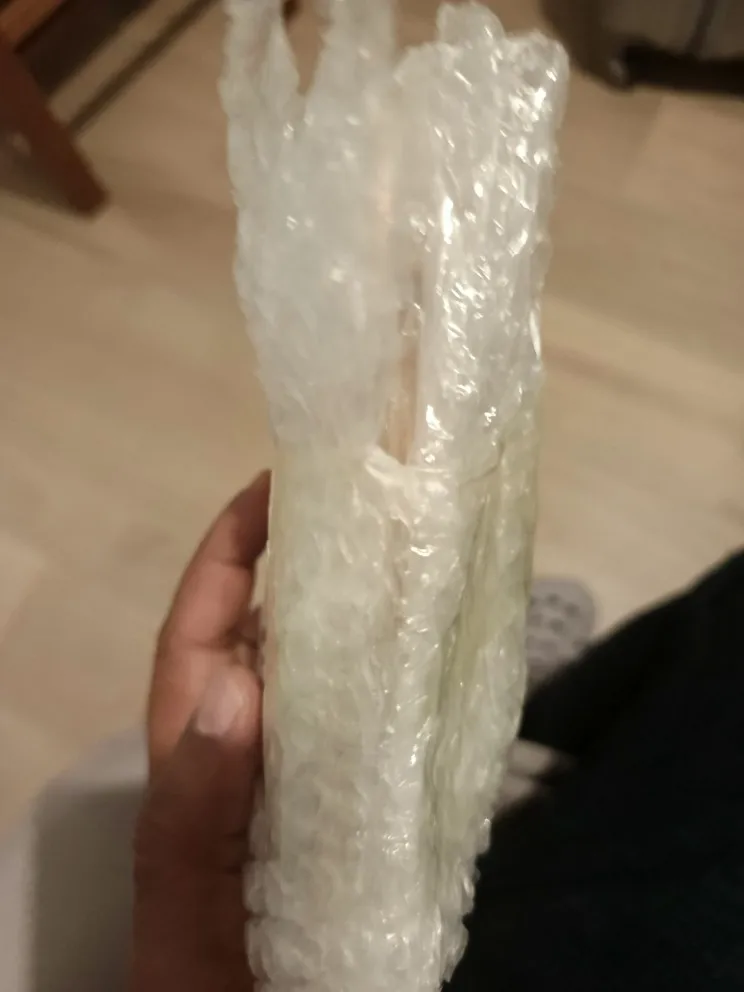STEM Science Project Kits | Solar System Science Model
STEM Science Project Kits | Solar System Science Model
Ignite your child's curiosity and creativity with hands-on solar system experiment!
- 🧠 Boosts problem-solving skills
- 🌟 Stimulates creativity
- 📚 Supports school projects
- 👐 Encourages hands-on learning
Couldn't load pickup availability

🚚 Shipping Information
🚚 Shipping Information
Every order at GadWitch Toys includes insured and tracked shipping.
Delivery estimates after shipment:
- Europe & UK: 7-14 business days,
- USA & Canada: 7-18 business days,
- Australia: 7-18 business days,
- Rest of the world: 14-20 business days.
📦 Return Policy
📦 Return Policy
15-Day Trial with no risks. If unsatisfied, reimbursement guaranteed.
💫 About STEM Science Project Kits | Solar System Science Model
💫 About STEM Science Project Kits | Solar System Science Model
Fun and Educational:
This electric solar system model offers a hands-on approach for children to learn the laws of planetary movement, including the earth, moon, and sun. Through practical operations, kids can explore eclipses by the moon, understand the difference between solar and lunar eclipses, and grasp how the earth rotates around the sun. This toy enhances their scientific knowledge while fostering a love for STEM and astronomy.
DIY Kits:
This is the perfect science project for budding scientists! A DIY solar system science experiment designed for children to assemble on their own, allowing them to create their very own working solar system model. This mini earth, moon, and sun science project helps kids explore planetary science, offering a fun way to understand the difference between a solar eclipse and a lunar eclipse while developing their creativity and critical thinking skills.
Material:
The planetary movement kits are made of eco-friendly wooden material, featuring a delicate design that’s both easy to operate and durable. These STEM science kits are perfect for repeated play, offering an environmentally friendly and long-lasting science and experiment experience.
Gift:
This science experiment toy is an ideal early learning gift for kids who are curious about our solar system. It’s suitable for boys and girls aged 6+ and makes a great gift for parents who care about STEM education or for teachers seeking a fun teaching aid to illustrate earth and moon orbits, solar eclipses, and more.
Scientific Toy:
This STEM educational toy is designed to enhance children's logical thinking, problem-solving abilities, and fine motor skills. It’s a great tool for learning about celestial movements, including the rotation of the sun, earth, and moon. Perfect for science fairs, it encourages curiosity and exploration of our planet and solar system, making it a fantastic addition to both classrooms and homes.
📐 Assembled Product Dimensions (L x W x H)
📐 Assembled Product Dimensions (L x W x H)
7.09 x 7.09 x 6.30 Inches, or
18 x 18 x 16 centimeters


Looking for the perfect educational toy that’s both fun and packed with learning? 🤔
Our STEM Science Project Kits | Solar System Science Model is a solar system experiment designed for kids ages 6+ that’s perfect for both classrooms and home learning. Whether you’re a parent dedicated to your child’s early STEM education or a teacher looking to bring science lessons to life, this wooden, eco-friendly kit will inspire curiosity about the universe!

A Fun and Engaging Way to Learn About the Solar System! 🚀
This DIY solar system model is a fantastic way for children to explore the wonders of astronomy. With this kit, they’ll learn about the sun, moon, and earth, and discover how eclipses by the moon, lunar eclipses, and solar eclipses occur. The interactive kit allows them to simulate celestial movements like the earth’s rotation around the sun and understand the differences between a solar eclipse and a lunar eclipse.
Imagine the joy as your child learns hands-on about the rotating earth, planetary science, and the positions of the sun, moon, and earth. This kit will not only teach them about solar systems but also improve their problem-solving skills and creativity—a great addition to any STEM curriculum.

Perfect for Both Parents and Teachers 🎁
Parents, if you’re looking to introduce your little one to science in a fun, engaging way, this STEM toy is perfect for you. It allows your child to understand the laws of planetary movement, including the earth, moon, and sun’s orbit, while crafting a working solar system model.
For teachers, this kit is ideal for classroom experiments. It’s a fantastic tool to visually demonstrate key scientific concepts like lunar and solar eclipses, earth's phases, and planetary orbits. Suitable for group projects or science fairs, this kit encourages teamwork, making learning both collaborative and exciting.
Questions about STEM Science Project Kits | Solar System Science Model

Why Choose Solar System Science Model?
- Learn about the earth’s movement around the sun and lunar/solar eclipses
- Develop hands-on STEM skills through DIY assembly
- Made from eco-friendly wooden materials
- Perfect for science experiments in classrooms or at home
- A great tool for teachers to illustrate complex science topics
What are the main features I can expect buying Solar System Science Model?
- STEM Learning: This solar system science model visually represents the dynamics of the Earth-Moon-Sun system, enhancing students’ understanding of celestial movements, such as the rotating earth and the orbit of the earth and moon, through interactive learning. It’s a perfect science project for exploring the difference between a solar eclipse and lunar eclipse, or the eclipse by the moon.
- Hands-On Experience: Assembling and operating the motorized orrery provides learners with a tangible way to observe the relative motions of the earth, moon, and sun, simulating important phenomena like solar eclipses, lunar eclipses, and earth’s movement around the sun. This DIY science project is an engaging way for students to bring astronomy and planetary science concepts to life, making complex topics like binary solar system and solar and lunar eclipses more accessible.
- Educational Value: The model serves as a valuable resource for teaching science experiment concepts, such as the orbits, phases of the moon, and seasonal changes. Students can easily visualize the position of the moon, sun, and earth during events like total moon eclipses and solar eclipse of the sun, as well as learn about the sun rotating around earth and solar system simulations. This model is perfect for STEM education and science fair projects, allowing students to engage in scientific experiments while understanding the earth-moon-sun system.
- Innovative Design: The use of gears in this solar system model simulates planetary movements and provides a practical demonstration of how mechanical systems can represent complex astronomical interactions. It’s an excellent science project for science fairs and classroom demonstrations, where students can explore earth science and the intricacies of the solar system—from earth phases and moon movement to understanding the earth shadow on moon during eclipses.
What are the keys movements illustrated by the Solar System Science model?
- Earth’s Orbit Around the Sun:
The earth revolves around the sun in an elliptical orbit, taking approximately 365.25 days to complete one full revolution. This earth movement around the sun, combined with the tilt of earth's axis, explains the cycle of seasons that we experience on our planet. - Moon’s Orbit Around Earth:
The moon orbits the earth roughly every 27.3 days, known as a sidereal month. Due to tidal locking, the moon’s movement is synchronized with its orbit, meaning the same side of the moon always faces earth. This alignment is critical for understanding phenomena such as eclipse by the moon, where the moon’s orbit creates opportunities for lunar eclipses and solar eclipses. - Phases of the Moon:
As the moon orbits the earth, varying portions of its surface are illuminated by the sun, resulting in different moon phases such as new moon, crescent, first quarter, gibbous, and full moon. These phases are an integral part of earth science and astronomy studies, providing a visual representation of the sunlight and moonlight relationship. - Solar Eclipse: A solar eclipse occurs when the moon passes between the earth and the sun, casting a shadow on earth. This alignment causes a dramatic phenomenon where portions of the sun become obscured from view, leading to a solar eclipse of the sun.
- Lunar Eclipse: A lunar eclipse occurs when the earth passes between the sun and the moon, casting a shadow on the moon. This event showcases the earth’s shadow on the moon and explains why eclipses don’t happen every month despite the moon’s orbit.
- Explaining the Seasons:
By tilting the earth’s axis in a science model working model like this, students can observe how different parts of the earth experience varying amounts of sunlight, explaining the difference between solar eclipse and lunar eclipse and the change in seasons. This visual representation helps students understand the earth's movement around the sun and its effects on the environment. - Understanding Moon Phases:
With the solar system model working set, students and teachers can visualize how the moon’s position relative to the earth and sun causes the phases of the moon we see from earth. This model serves as a hands-on educational tool for illustrating celestial movements in an engaging, interactive way. - Eclipses and Planetary Alignments:
The solar system model also demonstrates the specific alignments required for solar and lunar eclipses, helping children understand the positions of the moon, earth, and sun during these occurrences. The kit explains why solar eclipses and lunar eclipses don't happen monthly, making it perfect for STEM education and science projects.
What are the components of the STEM Science Project Kits | Solar System Science model?
- Sun: Represented by a large, stationary ball positioned at the center of the solar system model. As the heart of the solar system, the sun plays a key role in various celestial phenomena such as solar eclipses and sunlight and moonlight interaction. Perfect for a science project focused on the earth, sun, and moon.
- Earth: A smaller ball that revolves around the sun, demonstrating the earth’s movement around the sun and illustrating how day and night occur. This working science model allows children to explore how the earth and moon interact, simulating the earth rotating the sun and visualizing the difference between solar and lunar eclipses. This is a great way to introduce students to concepts like planetary science and earth phases.
- Moon: The smallest ball that orbits the earth, demonstrating the moon's movement around the earth. This element allows for the simulation of eclipses by the moon, including lunar eclipses and solar eclipses, helping kids understand the difference between a solar eclipse and a lunar eclipse. As they explore these celestial movements, children gain a deeper understanding of astronomy and the interactions between the sun, earth, and moon.
What is the STEM Science Project Kits | Solar System Science Model recommended for?
- STEM and Science Education:
This solar system science experiment toy is an exceptional educational tool for parents who want to encourage STEM education in their children and for teachers looking to enhance their classroom lessons. Students can use the model to explore our solar system and learn about the sun, moon, and earth movements. They can also simulate the position of the moon, sun, and earth to demonstrate solar lunar eclipses, while understanding the difference between a solar eclipse and lunar eclipse. - Science Fair Ready:
Whether for a science fair project or an experiment science experiment, this diy solar system kit provides an engaging way to showcase earth science, astronomy, and planetary science. With this solar system and planet model, students can present a working display of lunar and solar eclipses, solar system diagrams, and even solar system simulations, making it a must-have for STEM fair projects and classroom experiments.
What would be the applications for STEM Science Project Kits | Solar System Science Model?
This STEM Science Project Kit helps students understand the elliptical orbits of the earth around the sun and the moon around the earth. Through hands-on assembly, students will explore key astronomical concepts like the difference between solar eclipse and lunar eclipse, as well as how an eclipse by the moon occurs.
By building this solar system model, they can observe the rotating earth, the sun and moon movements, and simulate lunar and solar eclipses. This makes it an ideal science project for science fairs or classroom demonstrations. The kit serves as a DIY science project where kids can engage in both learning and play, enhancing their understanding of planetary science and the binary solar system.
Perfect for kids and teachers alike, this working solar system model offers a fun and interactive way to learn about solar system planets and the earth’s movement around the sun. It’s not just a toy, but a powerful educational set that covers important concepts like the earth and moon’s orbit, the position of the moon, sun, and earth, and the phases of the moon, making it an excellent choice for STEM education.
This science model encourages students to experiment and explore celestial movements, like the sun rotating around earth, and simulate the eclipse of the sun and lunar eclipse phases. It’s perfect for curious minds ready to dive into the wonders of our solar system.
What is included in the STEM Science Project Kits | Solar System Science Model package?
The Earth-Moon-Sun Motion Demonstration Model is a simple yet highly effective science model working model that vividly illustrates the relative movements of the earth, moon, and sun. This interactive solar system science experiment lets children simulate the rotating earth, explore the difference between a solar eclipse and a lunar eclipse, and understand the earth’s movement around the sun. Perfect for a science project for science fairs, it provides hands-on learning where children can observe the sun and moon, explore planetary science, and understand solar eclipses and lunar eclipses.
Kids can manipulate the solar system model to explore key celestial concepts like eclipses by the moon, earth phases from moon, and the orbit of the earth and moon. This model turns scientific principles into a tangible and fun DIY home experiment, sparking curiosity about our planet and solar system.
Package Contents:
- 27 pieces Wooden Shell: Eco-friendly materials for crafting your very own solar system model.
- 1 Motor: Power the interactive solar system for an engaging learning experience.
- 1 Battery Socket: Easily integrate power into your science experiment.
- 1 5mm Iron Shaft: Supports the sun, moon, and earth rotation in the model.
- 3 pieces Foam Ball: Represent the earth, moon, and sun in your science project.
- 1 Fixed Ring: Helps in assembling the solar system the solar system structure.
- 3 pieces Coloring Pen: Customize your solar system to better illustrate concepts like the position of moon, sun, and earth.
What people are saying
-
Christopher L.
★★★★★"This kit is amazing! My daughter learned so much while having fun. It's perfect for hands-on learning and the final product is super cool! Would definitely recommend. 🌟"
-
Richard S.
★★★★★"As a teacher, I can say this is an awesome learning tool. I used it for a class project and all the students were excited and engaged. It’s a fantastic way to teach principles of how the universe works."
-
David R.
★★★★★"Great product! My son assembled it with minimal help and was so proud of his solar system. It’s educational and very satisfying to see them build something on their own."
-
Henry Z.
★★★★★"Fun and educational! My kids were thrilled and learned a lot about mechanics, and, plus, Solar System. Definitely worth buying and makes an excellent gift."
Get Yours Now at a Special Offer!
We are confident that your child will love the STEM Science Project Kit | Solar System Science Model! If you're not completely satisfied, we offer a 15-day money-back guarantee. Try it risk-free!
Order today and spark a lifetime of curiosity in science, solar systems, and the wonders of space!
it was packaged carefully in bubble plastic to avoid damage. this is very appropiate. it includes pens to colour the planets, nice idea.













